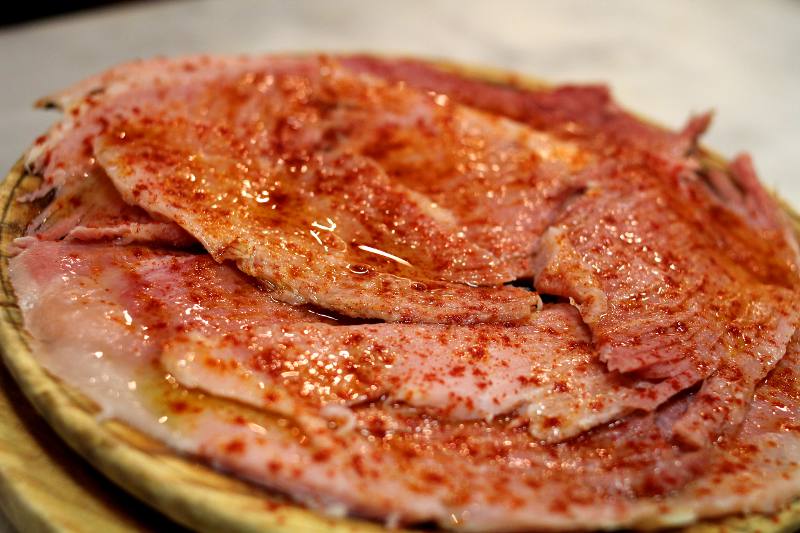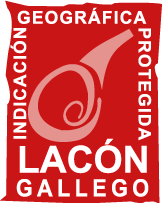The term lacon is a Galician word, derived from the Latin “lacca”, which has no straight translation into English. It refers to the pig’s shoulder ham, regarding especially to cured meat. We are facing, therefore, a genuine concept which defines a product rooted in the most ancient customs of our homeland.
References to this product, either of historical nature or within the framework of Galician gastronomic tradition, are manifold.
The first quotation appearing refers to the period of fasting and abstinence in the lands of our Region; so, a passage of the Synodal Constitutions of Orense, from 1619, reads the following: “On eating such as lacons and other thickness on Saturday shalt the custom in this bishopric be kept, which is that of allowing eating…” Refering to the XVII and early XVIII centuries, and related to the living conditions and eating habits of the peasantry from the interior of Lugo, several references to the lacon can be found in the Protocols’ section of the Provincial History Archive of Lugo. In these, we learn that lacons only hanged, by then, in the larders of those belonging to the privileged classes, such as noblemen or parish priests. Later in the XVIII century, several texts confirm that lacon was the subject of an important trading traffic in Galicia.

It is mentioned in a plethora of works related to Galician traditional gastronomy. Especially remarkable is the book “The Practical Cookery” (La Cocina Práctica) by Manuel Puga y Parga, alias "Picadillo" (“Mince”), which comprises several recipes where the lacon appears as an indispensable commodity. Its first edition dates back to 1905. From then on, each and every work related to Galician gastronomy will make reference to that book. We cannot neglect, among those, “Galician Cookery” (A Cociña Galega), a book published by Álvaro Cunqueiro in 1973 which is the most outstanding work on this land's gastronomy.
Well into the XX century, references on its consumption appear everywhere and, from the sixties on, its popularization becomes undeniable.




